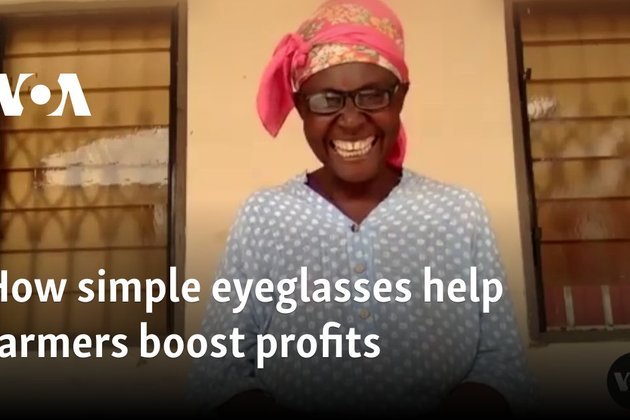London – As she got older, Juliet Owusu Addai struggled to carry out important tasks on her Ghana cocoa farm because of her blurred vision.
Only 10% of cocoa flowers self-pollinate naturally. The farmers must hand pollinate hundreds of flowers and transfer the pollen with small tweezers. They also have to sort the cocoa beans ready for market. Farmers and buyers are increasingly using mobile phones to shop, another challenging task with blurred vision.
“It was hard to work around my farm — to do the pollination, to do the pruning, to weed,” the 63-year-old told VOA. She suffered from crippling headaches and dizziness, which limited her ability to work and earn money.
In 2022, Addai managed to get a pair of glasses. “Before I got the jars, I could get eight to nine sacks of cocoa [a year]. But with the glasses I have, I could work on the farm and get 12 sacks. So it has really improved my livelihood,” she said.
Addai got the glasses after a screening carried out by the American charity VisionSpring. Its latest research, carried out in collaboration with Britain’s Queen’s University Belfast and published in the journal PLOS ONE, suggests that glasses could enable farm workers to increase their profits by a third, a potentially transformative increase in income.
The study was conducted in rural Bangladesh across a range of livelihoods and ages. “The median monthly income of a person who received reading glasses increased from $35.3 to $47.1 within eight months, a difference of 33.4%, whereas the control group showed no increase,” the report said. The results also suggested that glasses helped economically inactive people return to the workplace.
In 2019, the World Health Organization (WHO) estimated that more than 1 billion people worldwide live with vision impairment because they do not receive the care they need for conditions such as nearsightedness and farsightedness, glaucoma and cataracts.
“Eye diseases and visual impairment are widespread and too often still go untreated. People who need eye care must be able to receive quality interventions without suffering financial hardship,” said Tedros Adhanom Ghebreyesus, WHO Director-General.
VisionSpring’s research shows a large global disparity in access to eye health care.
“In high-income settings, 85% to 95% of people who need glasses have them. But in low-income settings, it’s as low as 3% to 15%,” Ella Gudwin, CEO of VisionSpring, told VOA.
The glasses themselves cost about $6, including associated screening and shipping costs.
“A very modest investment in vision correction for farmers and for artisans and professionals provides a fairly massive return on investment relative to the household income they are still able to earn. It is one of the few tools in the international development toolbox that can be used to to increase income in farming communities that have not yet been tapped,” Gudwin said.
VisionSpring conducted 3,500 vision screenings across seven cocoa districts in Ghana in 2022. Half of those screened required glasses. About 70% of them had never worn glasses before.
Ghanaian cocoa farmer Addai said the extra income she earns due to her improved eyesight has helped pay for her family’s education – in turn helping them increase their future earnings.
